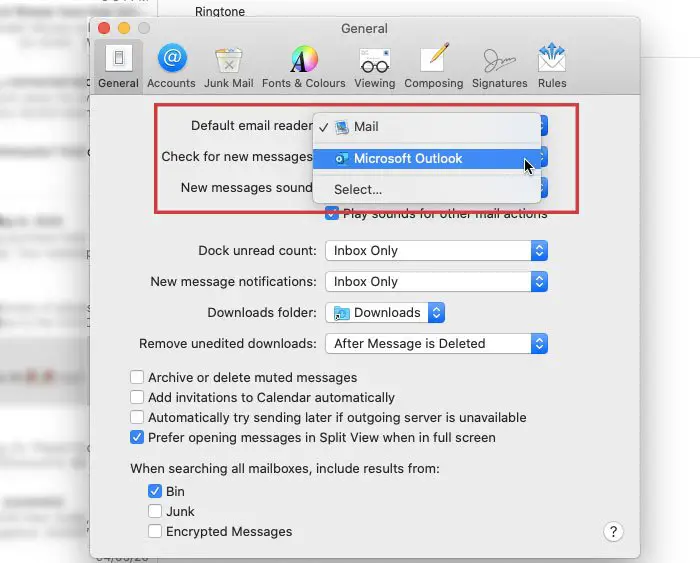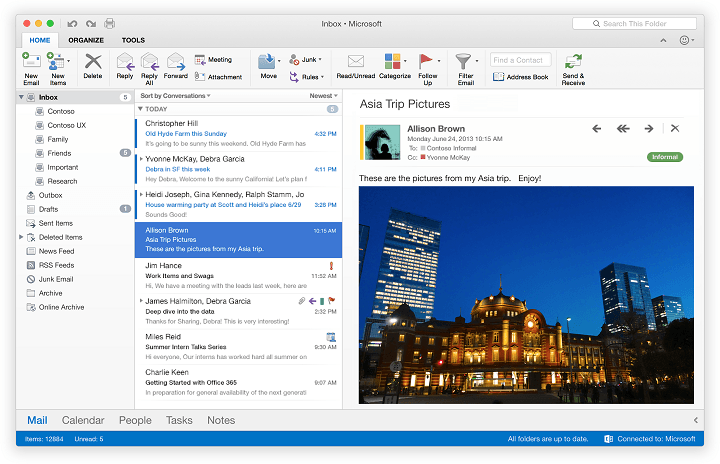

- #Show ruler compose message outlook for mac 2016 manual#
- #Show ruler compose message outlook for mac 2016 download#
MsgResult = MsgBox(msgText, vbCritical, msgTitle)

Set oInspector = Application.ActiveInspector MsgText = "This is not an editable email in HTML format." 'Description: Outlook macro to edit the HTML of an email that you are composing.įunction HTMLEditor(ByVal Action As String)ĭim objMail As MailItem, oInspector As Inspectorĭim msgResult As Integer, msgText As String, msgTitle As String
#Show ruler compose message outlook for mac 2016 manual#
You can use the code below for review or manual installation. The following code is contained in the zip-file referenced in the Quick Install. You can add a button for the EditHTML macro to the QAT or Ribbon of the New Email Compose window. Add a button for easy access to the macro or press ALT+F8 and select the macro you want to execute.Sign your code so you won’t get any security prompts and the macro won’t get disabled.Extract the zip-file and import the HTMLEdit.bas file via File-> Import….Open the VBA Editor (keyboard shortcut ALT+F11).
#Show ruler compose message outlook for mac 2016 download#

This button does exactly what you expect it to do It will not apply any changes that you’ve made in the HTML Editor to the message that you are composing and closes the HTTML Editor to return you to your message.Įmail HTML Editor for Outlook dialog with the HTML of a new email message. You’ll get a reminder of this in case your forgot. The macro can only send it when you’ve specified at least one recipient and the subject for the message. This is often needed for design heavy newsletters for which rerendering it with WordHTML could break the design for other mail clients.

The macro will apply the HTML code from the HTML Editor to the message and sends out the message with the HTML exactly as you’ve put it in the editor. If you really don’t want WordHTML to change your HTML again then this is your best pick. Usually, this doesn’t lead to any visual changes. Note however that further editing the message or even sending it could result in WordHTML restructuring or rewriting your HTML code. Below this Textbox there are 3 commands to choose from Īny modifications that you’ve made to the HTML code is being applied to the message. To prevent your code from being altered by the WordHTML engine, you can directly send the email from the HTML Editor so it will go out exactly as you intended.īy executing the EditHTML macro, you’ll open a dialog window which contains a Textbox to edit the HTML. This enables you to make specific alterations to a certain section of your email, quickly import a HTML sample or fully replace the HTML of the message with a template (like for a newsletter) which you created in another application. The EditHTML macro allows you to easily edit the raw HTML source code while composing an email. This way you can make sure that your carefully created design, like for a newsletter, isn’t being modified again by WordHTML and remains compatible with other mail clients. This makes it much easier to make specific modifications or use the HTML code that you’ve created in another HTML editor. With the EditHTML macro from this guide you can edit or completely replace the HTML of a message you are composing. Unfortunately, Outlook does not provide a direct way of editing this generated HTML code. When you reply or forward an email from the Reading Pane, the Show Fields group can be found on the Message tab.When composing a message in the HTML format in Outlook, the HTML code is automatically generated by the WordHTML engine. When you are using the Simplified Ribbon, you’ll need to press the ellipsis (…) menu on the right to see the commands.Įnable Bcc and From field when using the Reading Pane When composing a new message, select the Options tab and press the "Show BCC" and "Show From" buttons to enable them. Enable Bcc and From field when composing a new email You cannot disable the From field then either. Note: The From field will always be visible in Outlook when you have more than one account configured. Luckily there are several ways to configure Outlook to permanently display the Bcc and/or From field whenever you are composing an email. While you can always press on the “To” or “Address Book” command while composing a message to specify the Bcc field, it is a bit cumbersome and it still doesn’t allow you to set the From field. When composing a message I always want to see the BCC and From field.


 0 kommentar(er)
0 kommentar(er)
